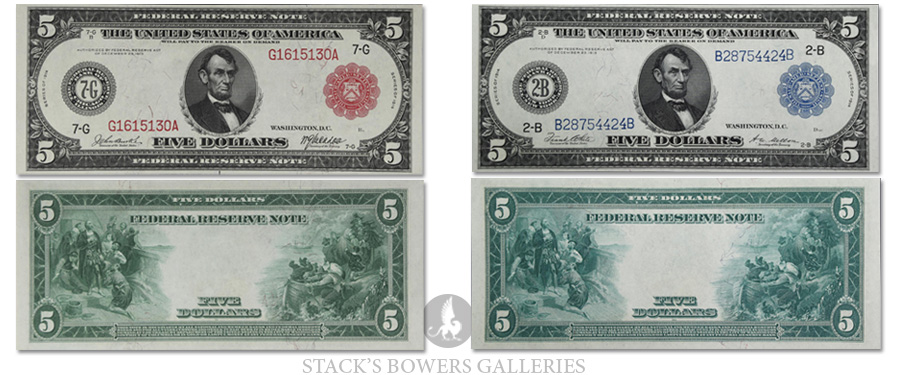
Printed for a short period after the creation of the Federal Reserve in 1913, early Federal Reserve Notes are direct ancestors of the paper money carried by Americans today. They comprise a collectible and colorful entry in American paper money history. Fairly soon after the first of these notes were made, the color of the seal was changed from red to blue.
Red Seal Federal Reserve Notes are often encountered displaying evidence of extensive circulation and are seen much less regularly than their Blue Seal counterparts. Explanations as to the discontinuance of the red ink is often explained by the conflict in Europe and the fact that adequate supplies of red ink could not be sourced from German suppliers.
However, the reality of the shift from red to blue is a bit more complex. According to an 2012 article in Paper Money (the official journal of the Society of Paper Money Collectors), domestic suppliers developed through the aid of the American Chemical Society helped to alleviate wartime issues in procuring ink from Europe, a fact which disputes the previous assumption regarding German suppliers. Rather it was found that the red overprints were more prone to fading when exposed to moisture or a strong light.
A letter from Assistant Treasury Secretary William P. Malburn dated July 8, 1915, explained that the red ink was prone to fading when exposed to moisture whereas the blue ink withstood testing without these issues. Following Malburn’s recommendation the Federal Reserve Board approved the change and referred it to a committee headed by the Secretary of the Treasury and the Comptroller of Currency which approved the change on August 9, 1915.
Today such Red Seal notes remain anywhere from scarce to rare on the open market. The $5, $10, $20 denominations can be found with relative ease while the $50s and $100s are a rare sight even in inventories of established dealers and auction houses. Notes from various districts and of differing Friedberg numbers see significant variations in rarity and value. For instance, a $20 from Atlanta stands to recognize a stronger premium than one from New York. Overall, the Series of 1914 Federal Reserve Notes mark a fascinating and often underappreciated chapter in the history of American paper money and offer many rarities deserving of collector interest.
To consign your numismatic items to one of our upcoming auctions, please call 800-458-4646 or email Info@StacksBowers.com.





